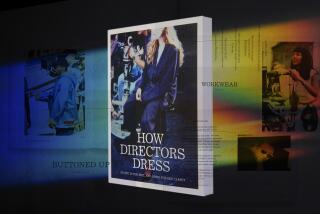Do clothes make the employee? Who needs a dress code?
- Share via
Colleagues at our downtown neighbor, the legal newspaper the Daily Journal, were just put on notice to spiff if up.
A memo more detailed than a “Project Runway” challenge laid out an employee dress code in dos and don’ts -- mostly don’ts, by far, and most of them directed at women’s styles. I can’t imagine that any journalist at the Daily Journal ever pranced into the office in a bare midriff, so the reasons for such specifics elude me.
The memo was as detailed as a FIDM class on the differences between capris, which are not acceptable, and crop or ankle pants, which are. Spaghetti-strap tops can be worn only with a sweater or jacket. No jeans fabric of any kind, above or below the waist. No T-shirts or exercise clothes, and shoes must be secured with ankle straps -- “for safety reasons.” And only messengers can wear sneakers.
This smacks a teeny bit of the fabled and maybe apocryphal Catholic school skirt-length battles. How many inches constitute the difference between capris and ankle pants? And surely natty jeans look a lot better than rumpled chinos.
Yet there are workplaces out there in dire need of this memo. I don’t know them by name, but I see their workers coming and going into and out of buildings, and I think, “Is this Saturday? Who would go to work dressed like that?”
Mark Zuckerberg can get away with wearing that hoodie as his work uniform because he is Mark Zuckerberg and he can extend a symbolic middle sartorial finger to the business-suited world. Conversely, wearing a hoodie does not turn you into Mark Zuckerberg.
Dial Torgerson, an elegant Timesman killed as he was covering conflicts in Central America, would sometimes survey his colleagues’ sartorial shortcomings and sigh and pop over to the Goodwill store and come back with a handful of dollar ties of invariably better quality than the ones knotted around the necks of the Times habitués, who swapped out their own neckties for Torgerson’s.
Maybe some of the people who go to work in flip-flops and sweatshirts don’t have to go public to represent their employers, but out at news conferences and in some offices, I still see people wearing clothes I’d wear to the gym. On the weekend. At night.
HR types and job recruiters point out Gen Xers’ shortcomings in job interviews: Beyond inadequate, poorly written resumes and cover letters, it’s how they dress --too bare, too funky, too laid back.
It’s swell that we don’t live under a Brooks Brothers diktat any more. And it’s swell that in some workplaces you can pretty much “come as you are” -- and the way you are is the way you would be dressed if your bedroom smoke alarm went off at 3 a.m.
Clothes don’t signal class and job differences as much as they once did. How did Americans ever get dressed without denim and T-shirts? But the conformity of “comfort” means that some work wardrobes are no more individualistic than “Mad Men” in fleece. There should be a difference between what you wear at home, where you answer to you, and what you wear to work, where you represent the company whose name is on your paycheck.
My grandfather, one of whose jobs was tending the local cemeteries, wore gray workmen’s clothes and workmen’s boots not for style but for practicality. And he was delighted to lay them aside on Sundays and special days to put on his one suit, or a sports coat and tie. He would have been appalled to see mourners, at a graveside in a cemetery he had cared for with such reverence, showing up for the obsequies in shorts and tank tops.
Whatever you think of foreign sweatshop labor, new clothes are cheaper and more abundant than ever in this country, so no one is priced out of a wardrobe of tidy workplace basics. I see people buying nice clothes all the time; exactly where is it they’re wearing them?
Does your office have a dress code? Plenty of room to detail it right here. (Not you, San Diego Mayor Bob Filner. “Don’t wear panties to work” is not a dress code, it’s a lawsuit.)
ALSO:
Criminalizing Wall Street crimes
Morrison: Brenda E. Stevenson, writer of wrongs
More to Read
A cure for the common opinion
Get thought-provoking perspectives with our weekly newsletter.
You may occasionally receive promotional content from the Los Angeles Times.











